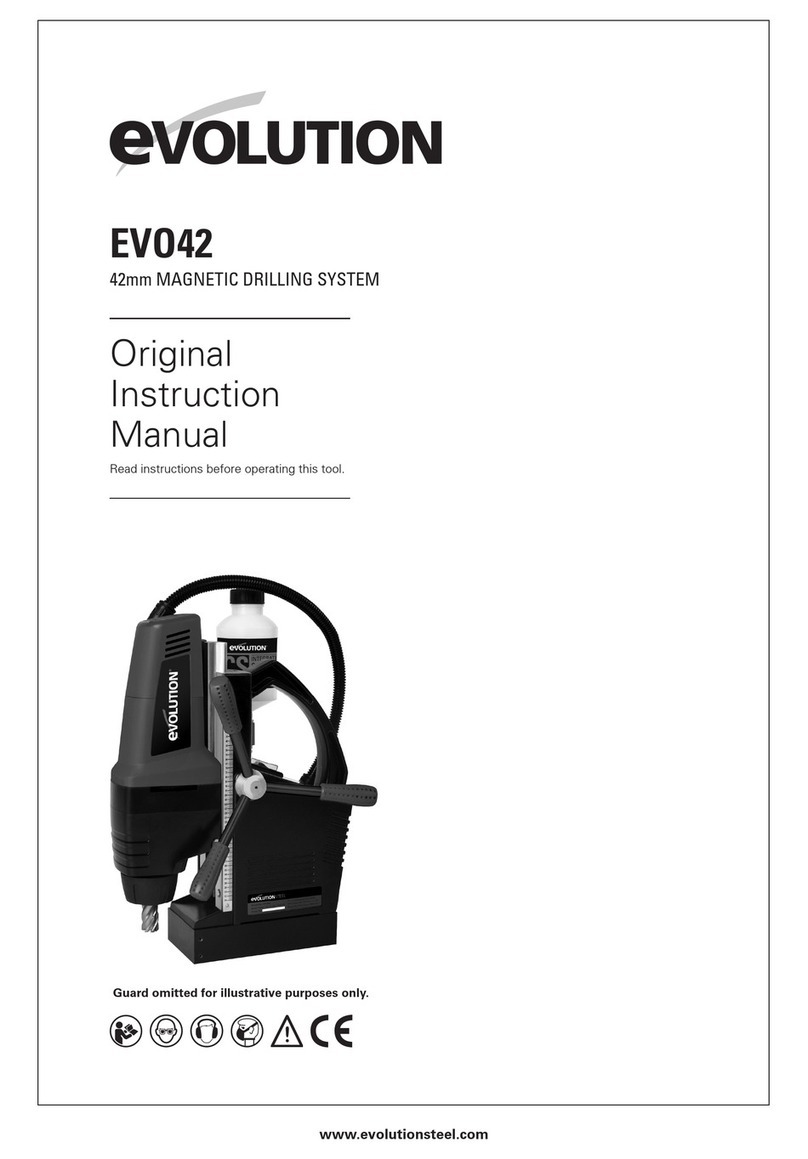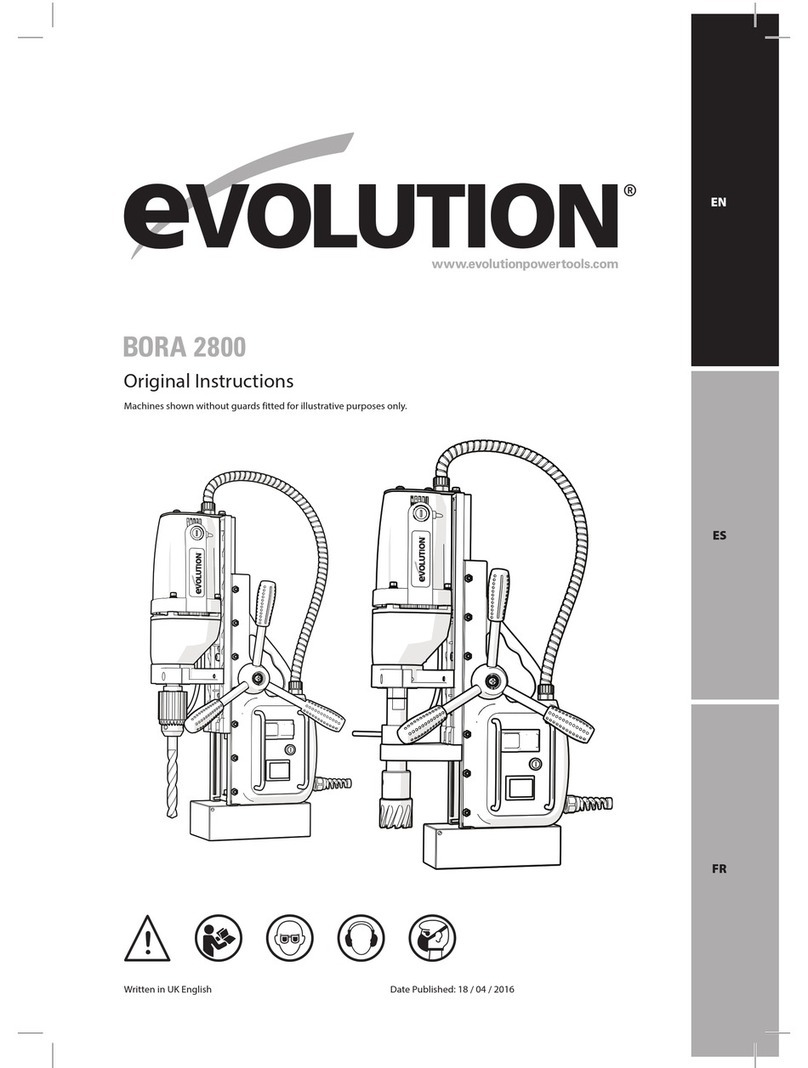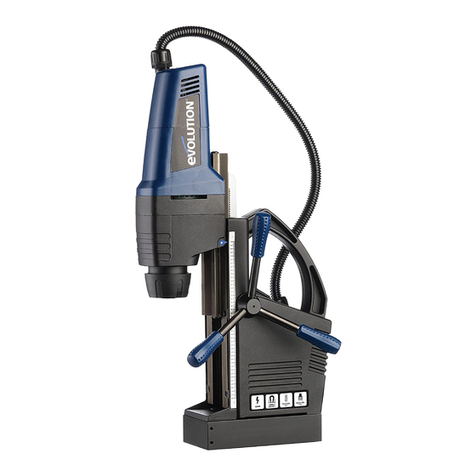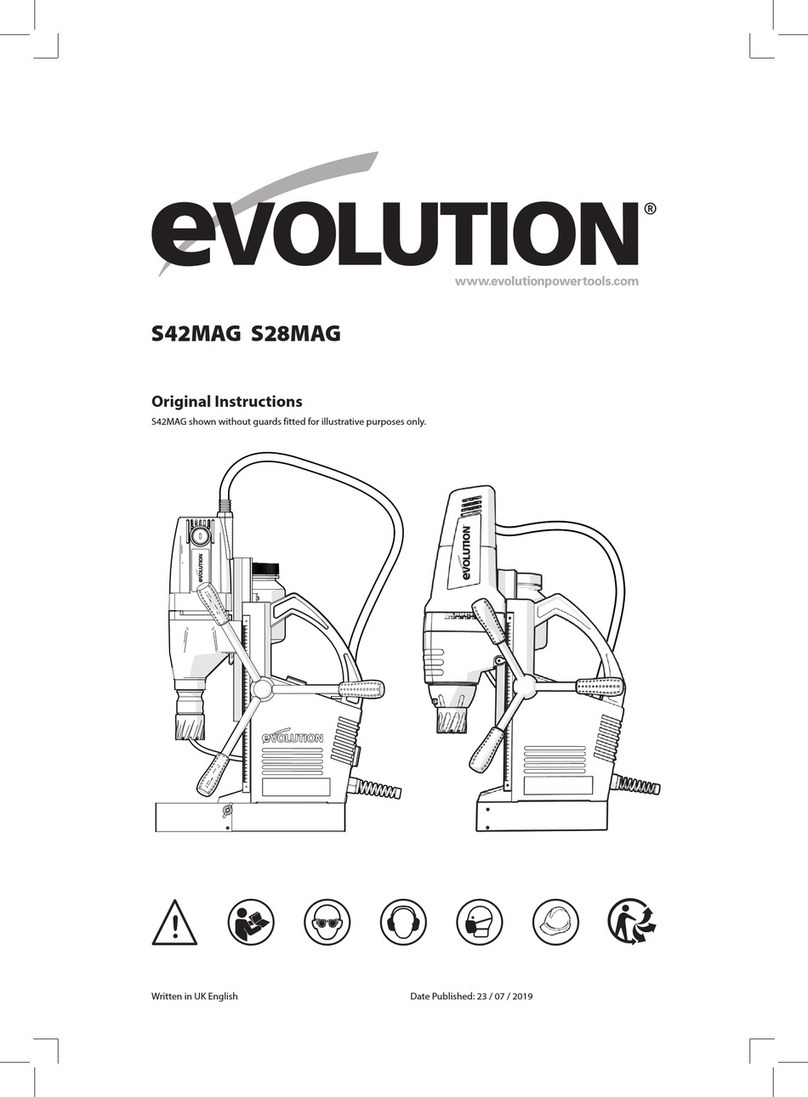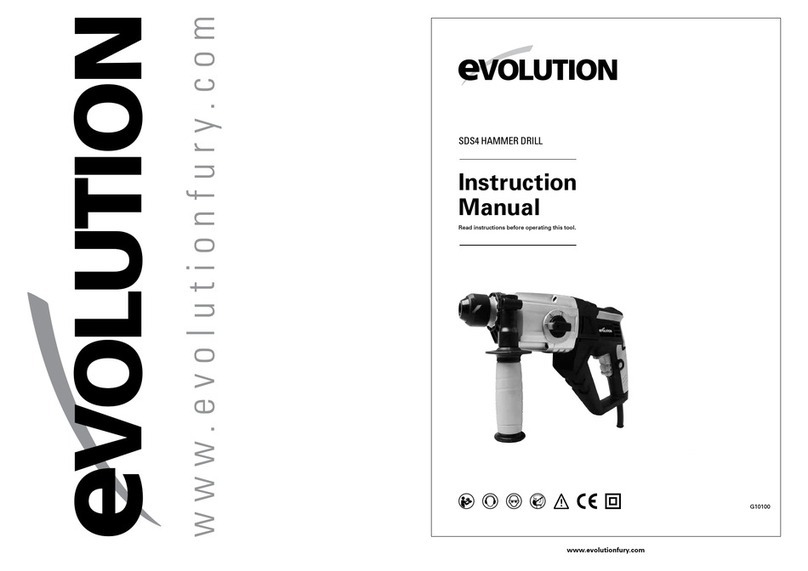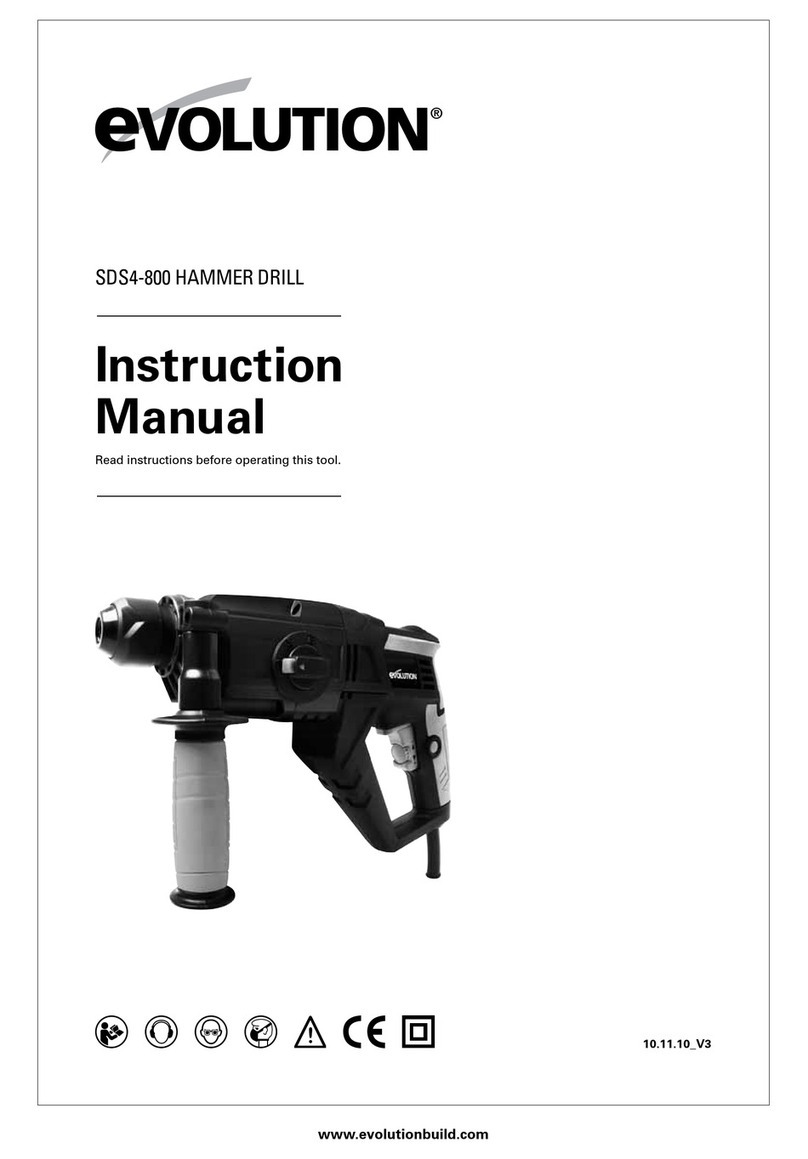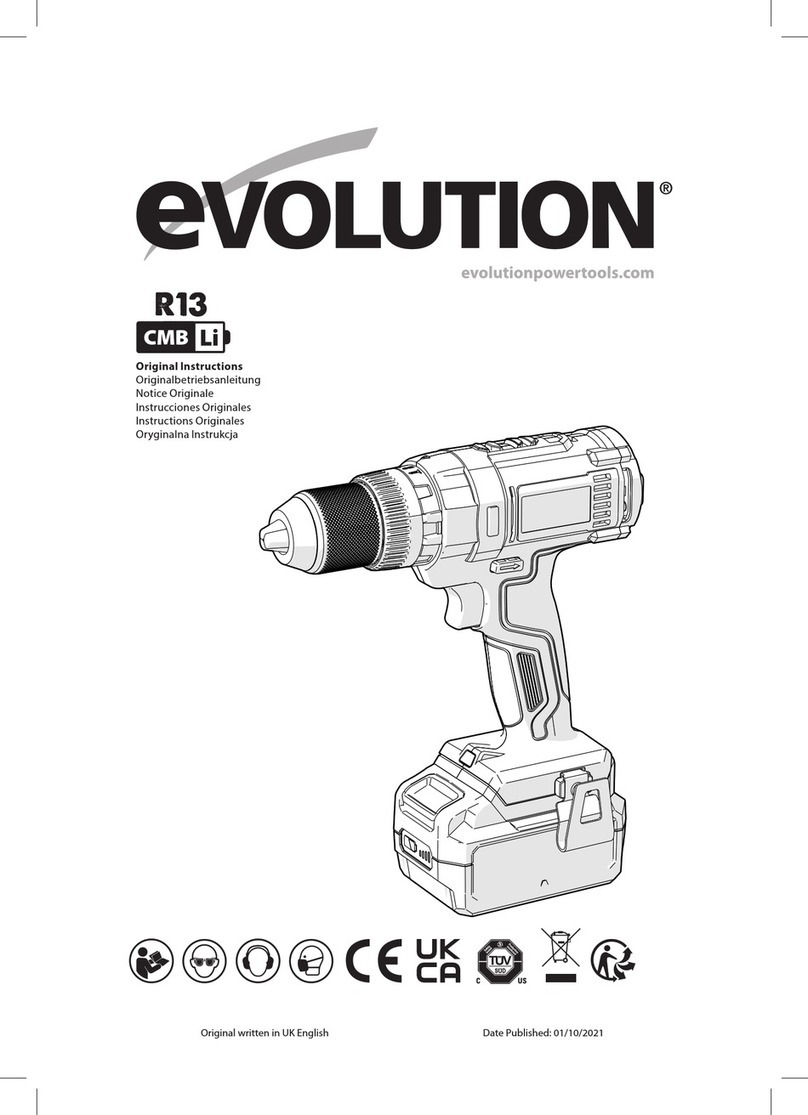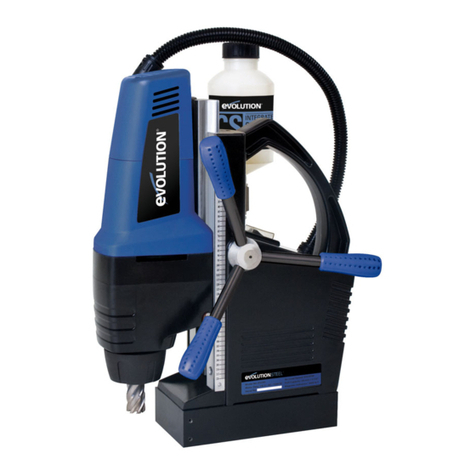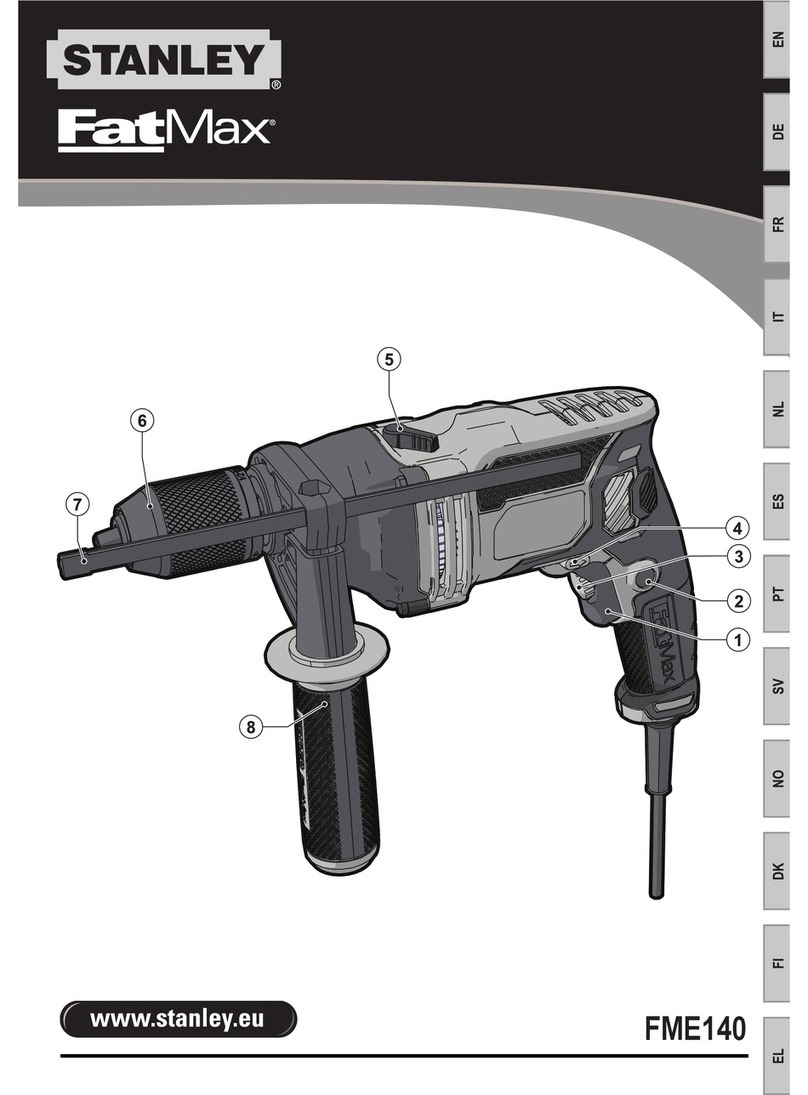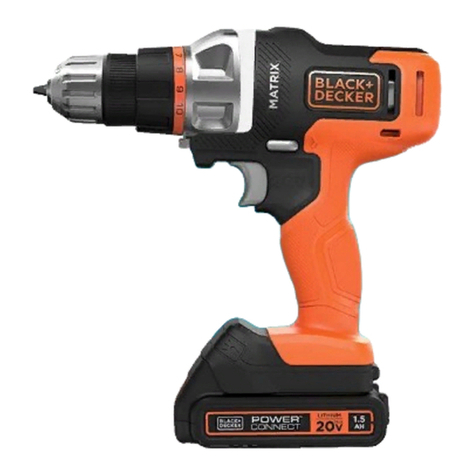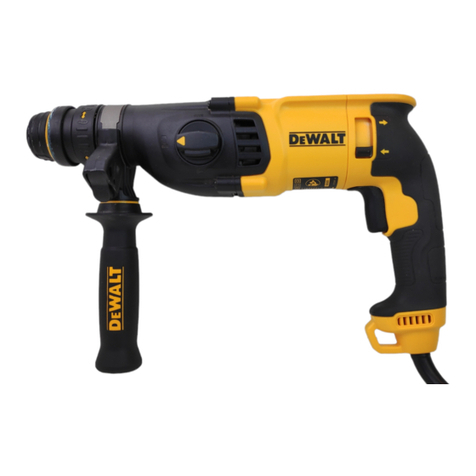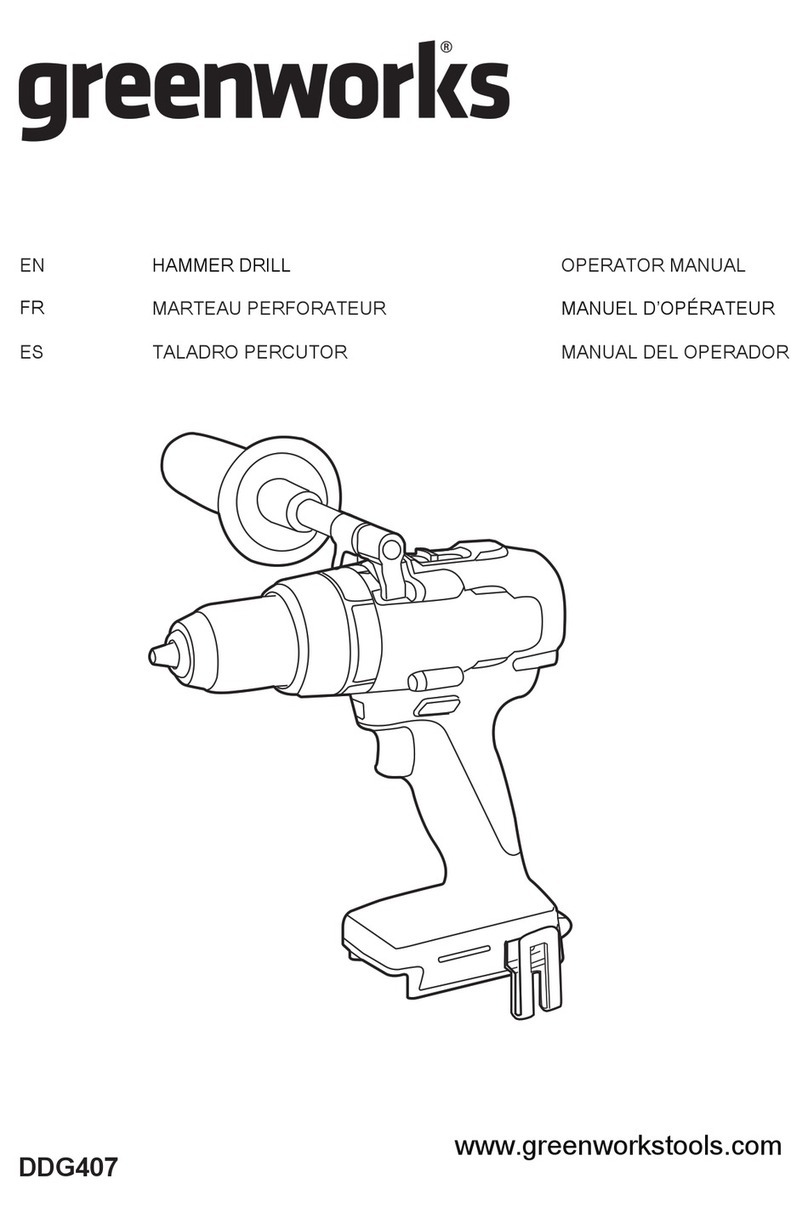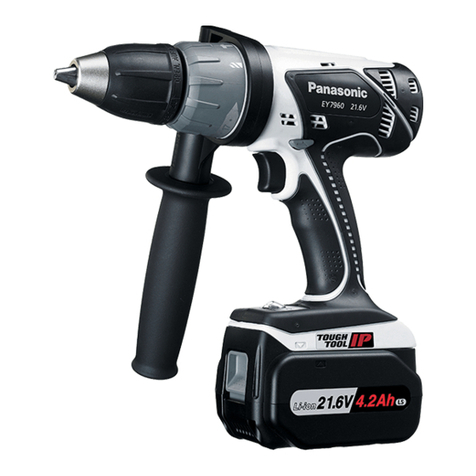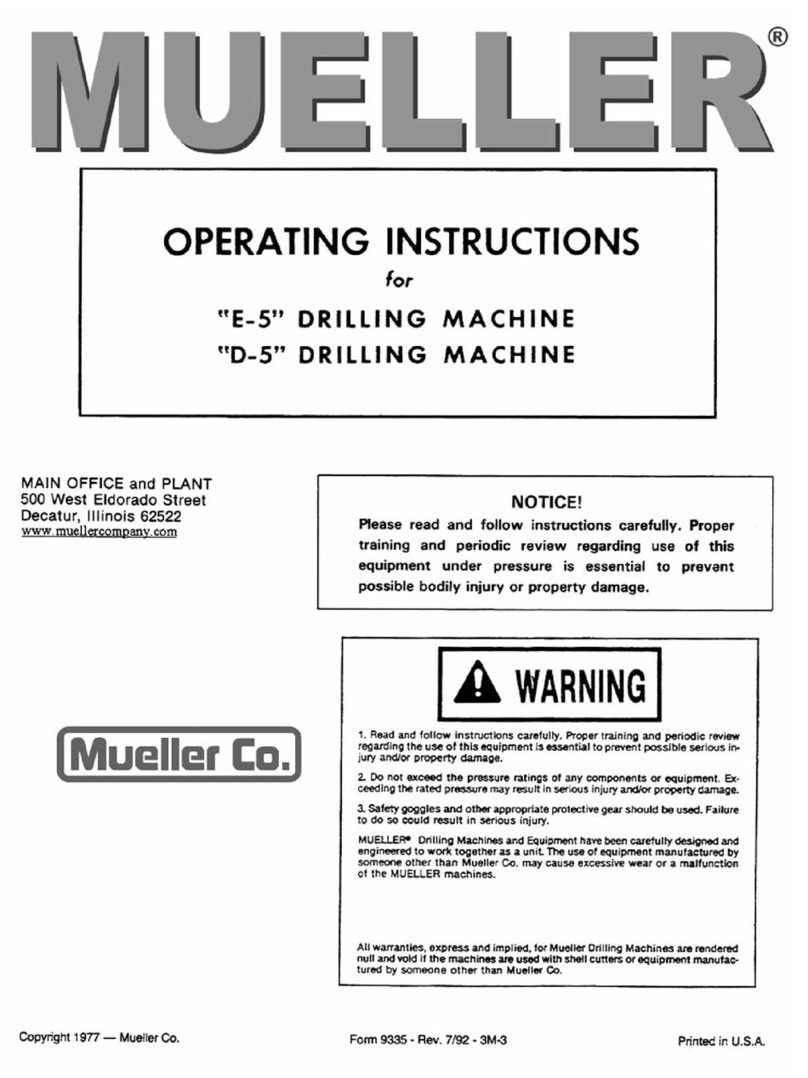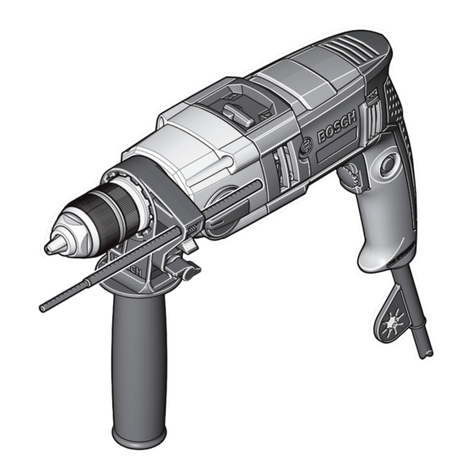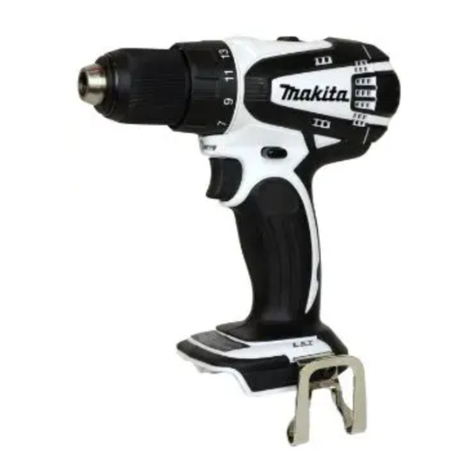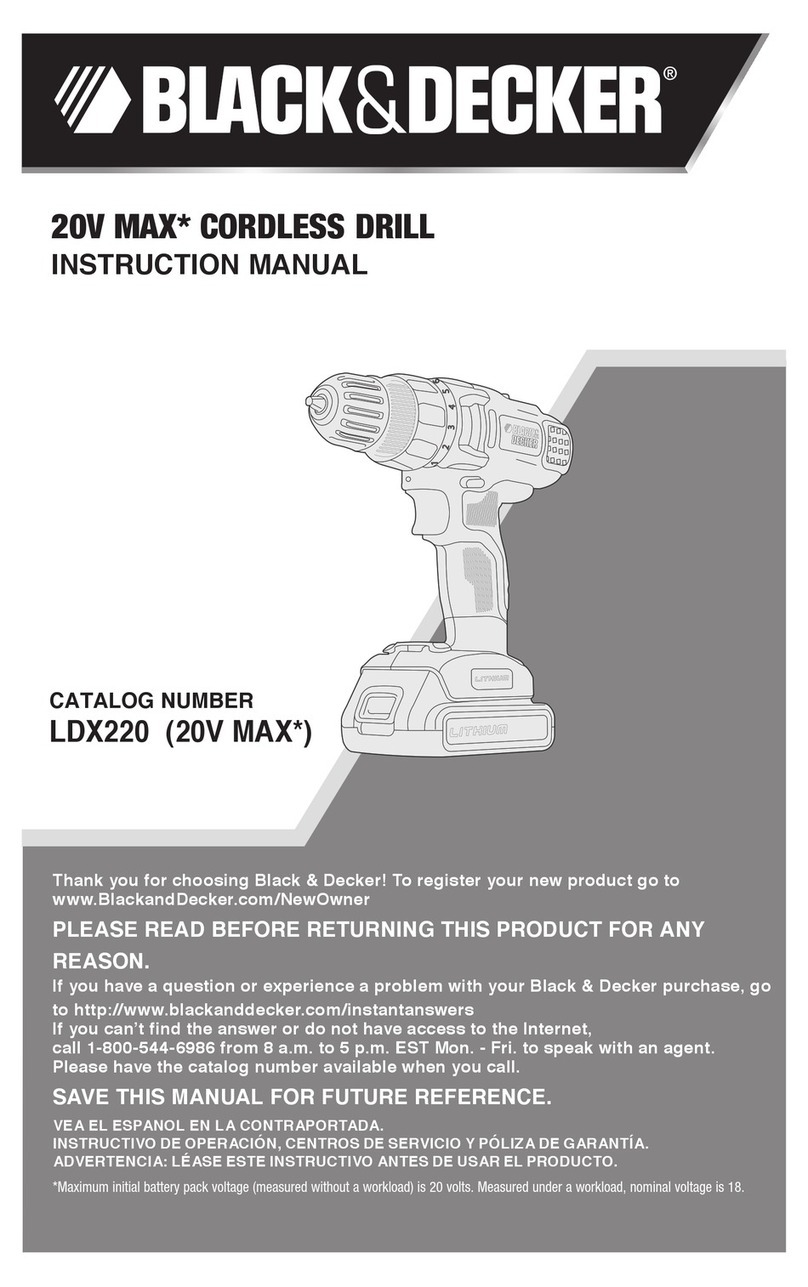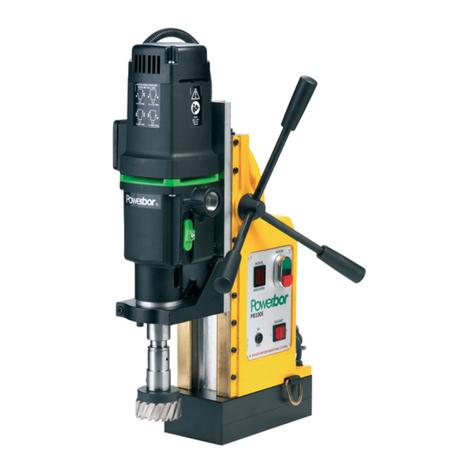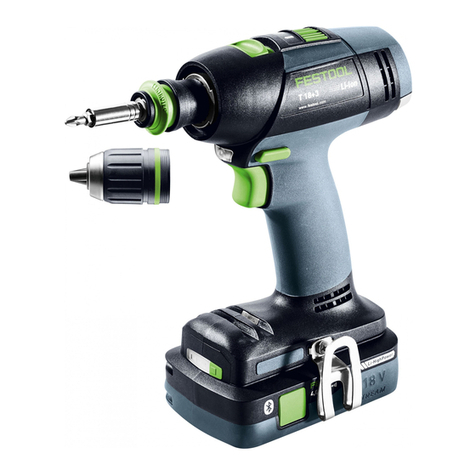10 11
www.evolutionpowertools.com www.evolutionpowertools.com
FR
ES
EN
WARNING: To prevent ingress of fluids into
the electrical system, cutting paste should be
used rather than cutting fluid when using a
machine in an inverted position.
(9.14)
PROHIBITED USES OF
THESE POWER TOOLS
• These power tools must always be provided
with a ground or protective earth connection
and use AC supply only.
• These power tools should not be used in a
potentially explosive environment.
• These power tools should not be used in a
wet or humid environment where water could
be drawn into the machine’s cooling and
ventilation system.
• These machines should never be positioned
on a work piece between the electrode and
ground of an arc type welder. Damage will
result as the welder will ground through the
magnetic drill’s ground or earth cable.
• These machines should not be used where
the voltage is abnormally lower than the rated
voltage, subject to voltage tolerances. Check
the machine’s rating plate and the available
mains voltage supply to ensure compatibility.
WARNING: Operating these machines
on a lower than rated voltage may result
in the electromagnet being at a reduced
power level, and the machine could become
unstable whilst cutting.
(1.13)
WARNING: This machine is not intended for use
by persons (including children) with reduced
physical, sensory or mental capabilities, or lack
of experience and knowledge, unless they
have been given supervision or instruction
concerning the safe use of the machine by a
person responsible for their safety and who is
competent in its safe use.
Children should be supervised to ensure
that they do not have access to, and are not
allowed to play with, this machine.
(1.14)
ELECTRICAL SAFETY
This machine is fitted with the correct moulded
plug and mains lead for the designated market.
If the mains lead or the plug are damaged in
any way, they must be replaced with original
replacement parts by a competent technician.
(1.15)
OUTDOOR USE
WARNING: For your protection,if this tool is
to be used outdoors it should not be exposed
to rain, or used in damp locations. Do not place
the tool on damp surfaces. Use a clean, dry
workbench if available. For added protection
use a residual current device (R.C.D.) That will
interrupt the supply if the leakage current
to earth exceeds 30mA for 30ms. Always
check the operation of the residual current
device (R.C.D.) before using the machine. If an
extension cable is required it must be a suitable
type for use outdoors and so labelled.
The manufacturer’s instructions should be
followed when using an extension cable.
(2.1)
GENERAL POWER TOOL
SAFETY INSTRUCTIONS
(These General Power Tool Safety Instructions
are as specified in BS EN 60745-1:2009
& EN 61029-1:2009)
WARNING: Read all safety warnings and
instructions. Failure to follow the warnings
and instructions may result in electric shock,
fire and / or serious injury.
Save all warnings and instructions for
future reference. The term “power tool” in
the warnings refers to your mains-operated
(corded) power tool or battery-operated
(cordless) power tool.
(2.2)
1) General Power Tool Safety Warnings
[Work area safety]
a) Keep work area clean and well lit.
Cluttered or dark areas invite accidents.
b) Do not operate power tools in
explosive atmospheres, such as in the
presence of flammable liquids, gasses
or dust. Power tools create sparks which may
ignite the dust or fumes.
c) Keep children and bystanders away
while operating power tool. Distractions
can cause you to lose control.
(2.3)
2) General Power Tool Safety Warnings
[Electrical Safety]
a) Power tool plugs must match the outlet.
Never modify the plug in any way. Do
not use any adapter plugs with earthed
(grounded) power tools. Unmodified plugs
and matching outlets will reduce the risk of
electric shock.
b) Avoid body contact with earthed
or grounded surfaces, such as pipes,
radiators, ranges and refrigerators. There is
an increased risk of electric shock if your body
is earthed or grounded.
c) Do not expose power tools to rain or wet
conditions. Water entering a power tool will
increase the risk of electric shock.
d) Do not abuse the cord. Never use the
cord for carrying, pulling or unplugging the
power tool. Keep cord away from heat, oil, sharp
edges or moving parts. Damaged or entangled
cords increase the risk of electric shock.
e) When operating a power tool outdoors,
use an extension cord suitable for outdoor
use. Use of a cord suitable for outdoor use
reduces the risk of electric shock.
f) If operating a power tool in a damp
location is unavoidable, use a residual
current device (RCD) protected supply.
Use of an RCD reduces the risk of electric shock.
(2.4)
3) General Power Tool Safety Warnings
[Personal Safety].
a) Stay alert, watch what you are doing
and use common sense when operating a
power tool. Do not use a power tool while
you are tired or under the influence of
drugs, alcohol or medication. A moment of
inattention while operating power tools may
result in serious personal injury.
b)Use personalprotectiveequipment. Always
weareyeprotection.Protective equipment such
as dust masks, non-skid safety shoes, hard hat or
hearing protection used for appropriate conditions
will reduce personal injuries.
c) Prevent unintentional starting. Ensure the
switch is in the off-position before connecting to
power source and or battery pack, picking up or
carrying the tool. Carrying power tools with your
finger on the switch or energising the power
tools that have the switch on invites accidents.
d) Remove any adjusting key or wrench
before turning the power tool on. A wrench
or key left attached to a rotating part of a
power tool may result in personal injury .
e) Do not overreach. Keep proper footing and
balance at all times. This enables better control
of the power tool in unexpected situations.
f) Dress properly. Do not wear loose
clothing or jewelry. Keep your hair, clothing
and gloves away from moving parts. Loose
clothes, jewelry or long hair can be caught in
moving parts.
g) If devices are provided for the
connection of dust extraction and
collection facilities, ensure that these are
connected and properly used. Use of dust
collection can reduce dust-related hazards.
(2.5)
4) General Power Tool Safety Warnings
[Power tool use and care].
a) Do not force the power tool. Use the
correct power tool for your application.
The correct power tool will do the job better
and safer at a rate for which it was designed.
b) Do not use the power tool if the switch
